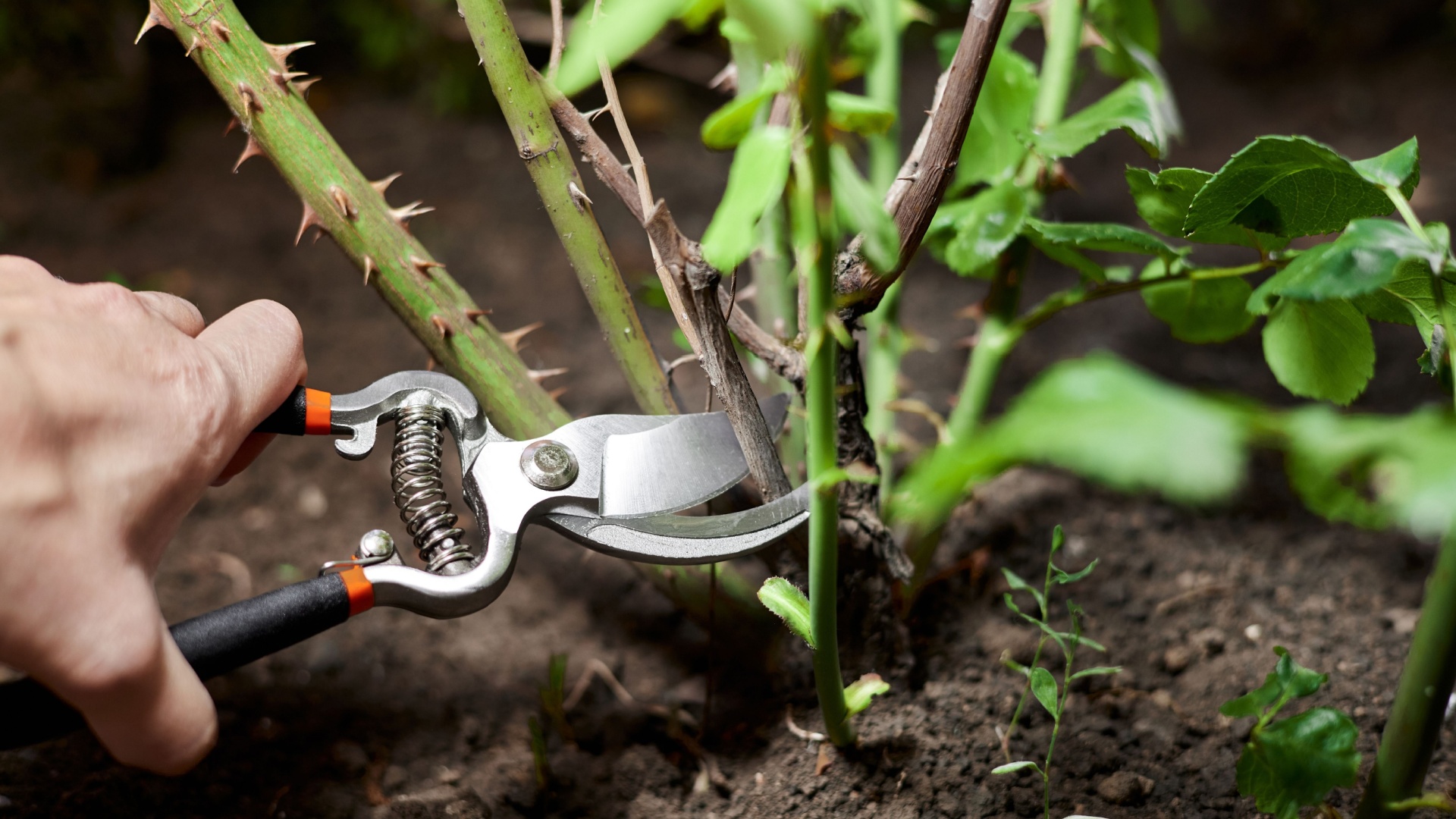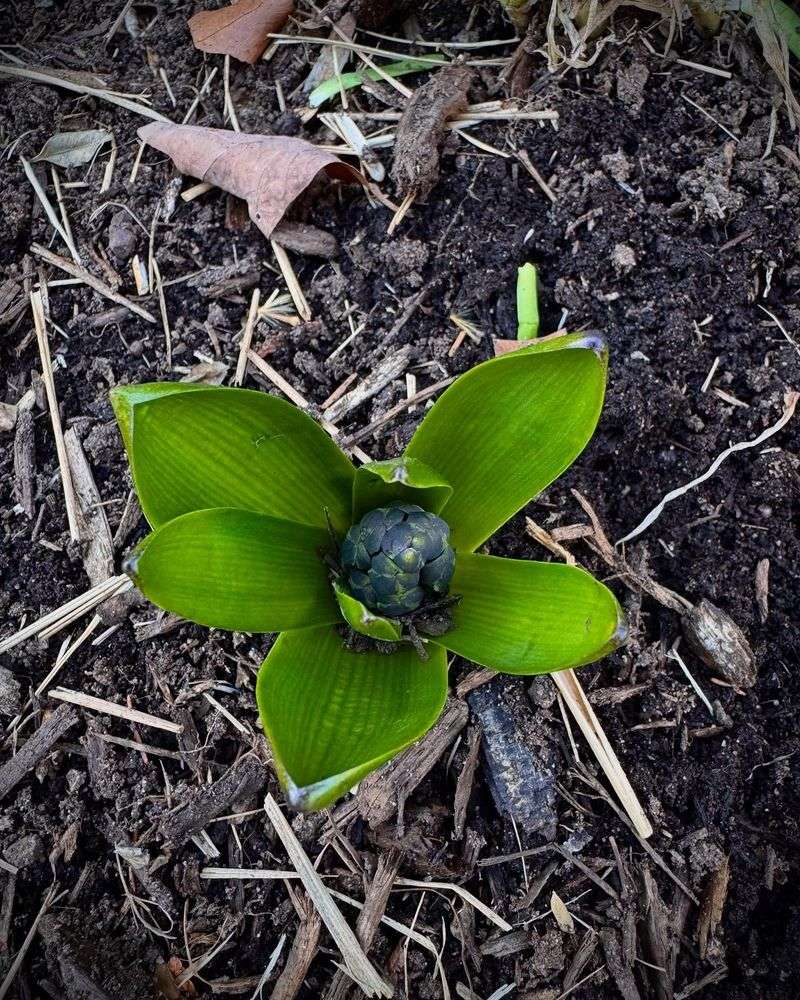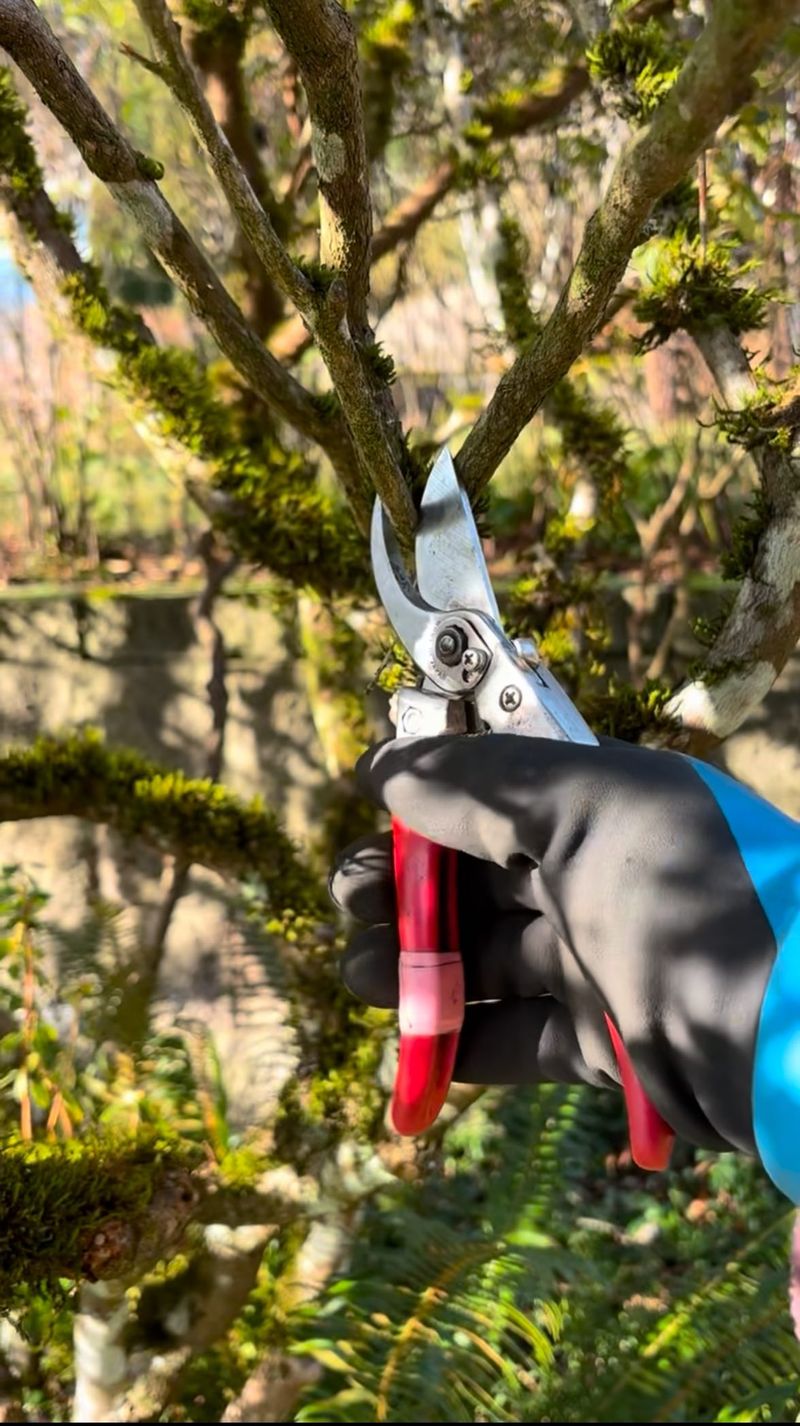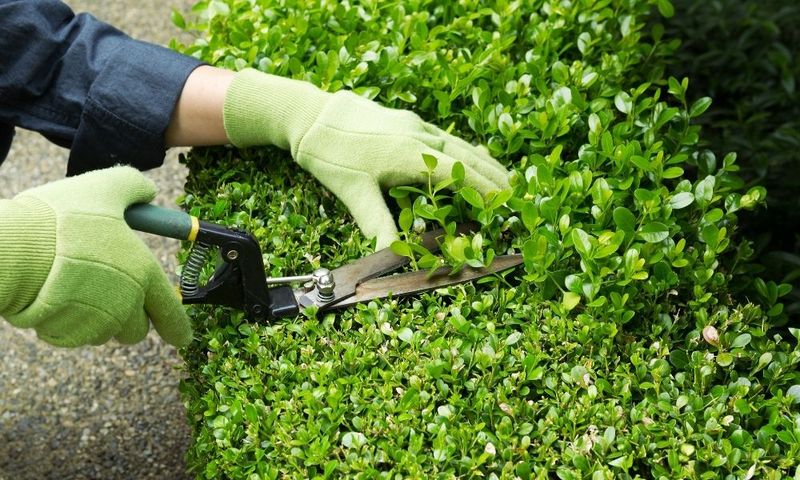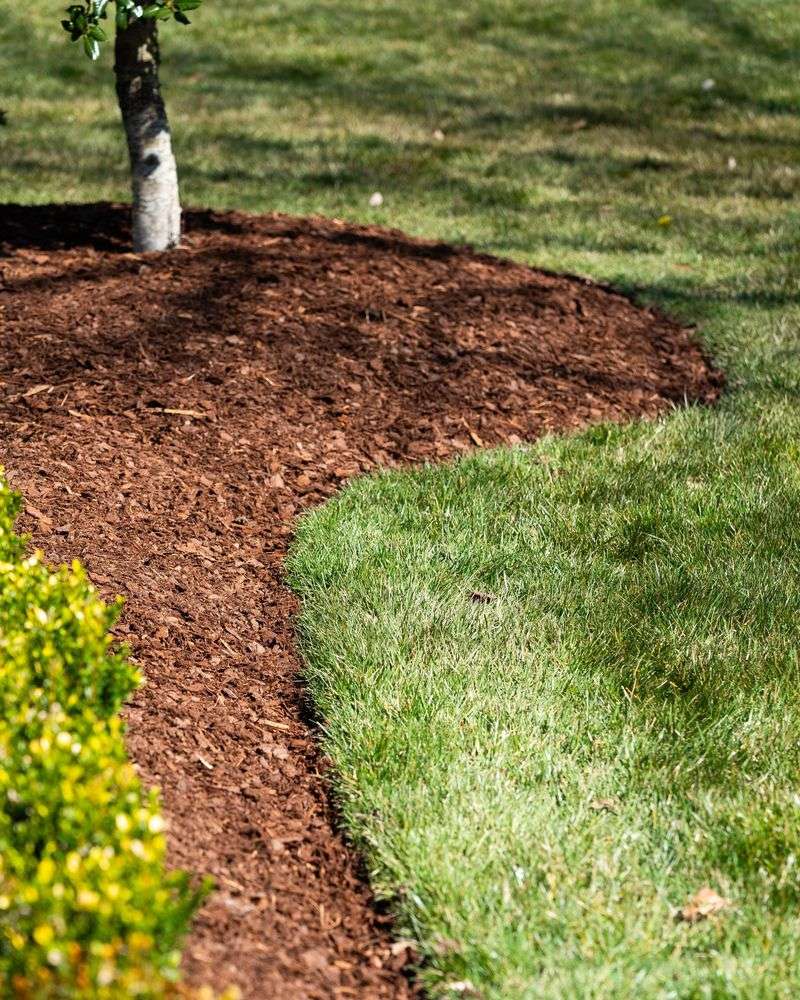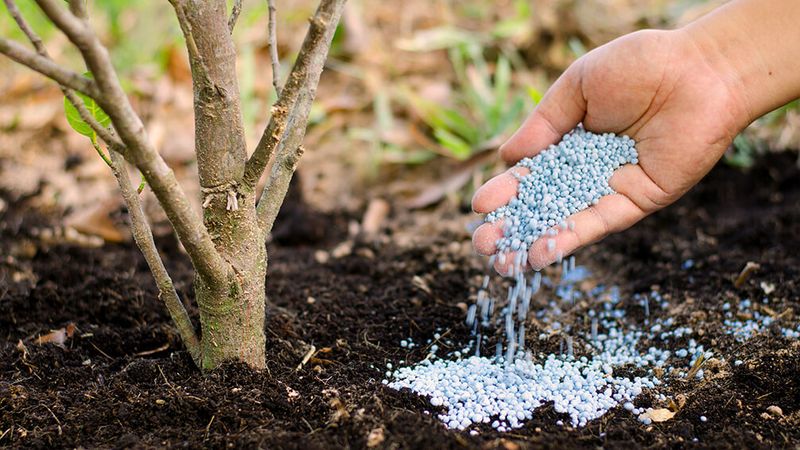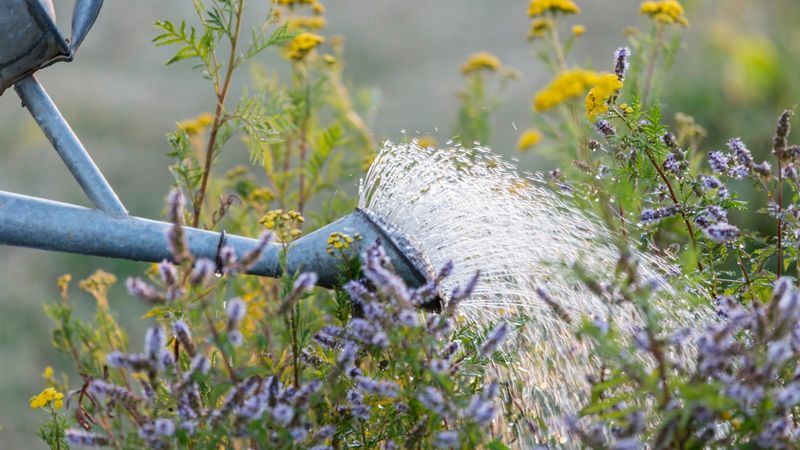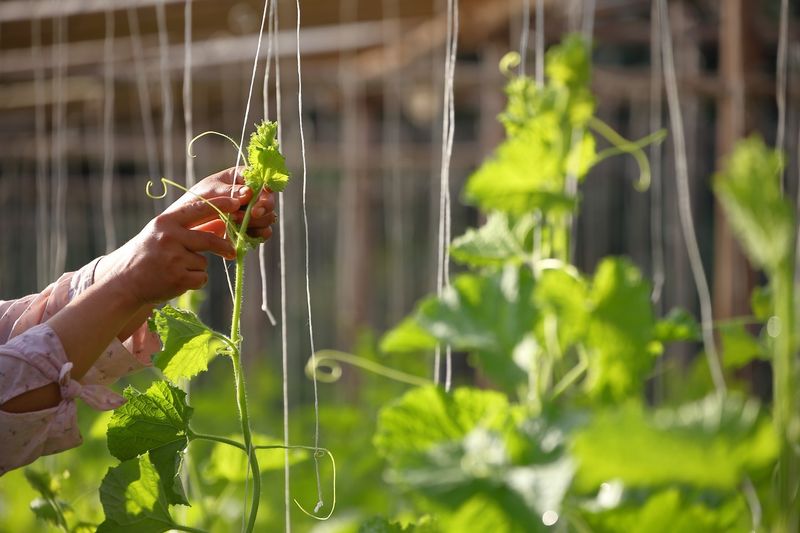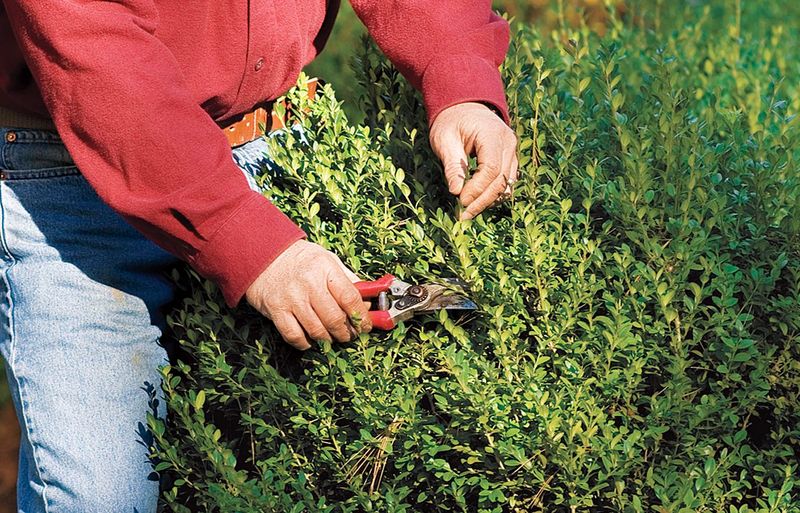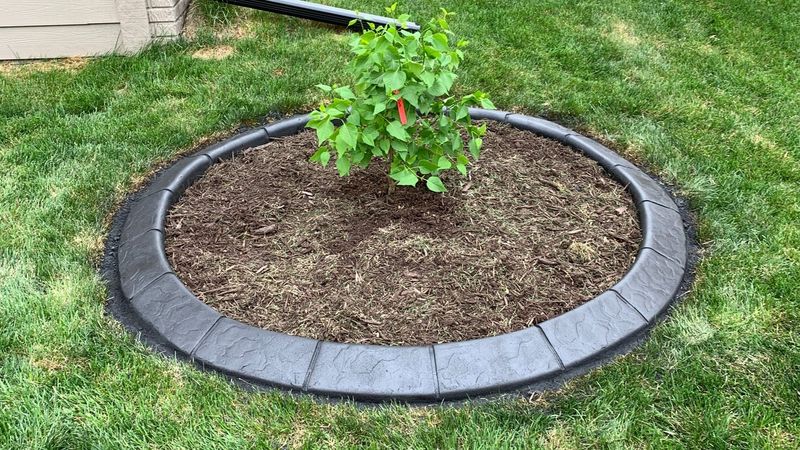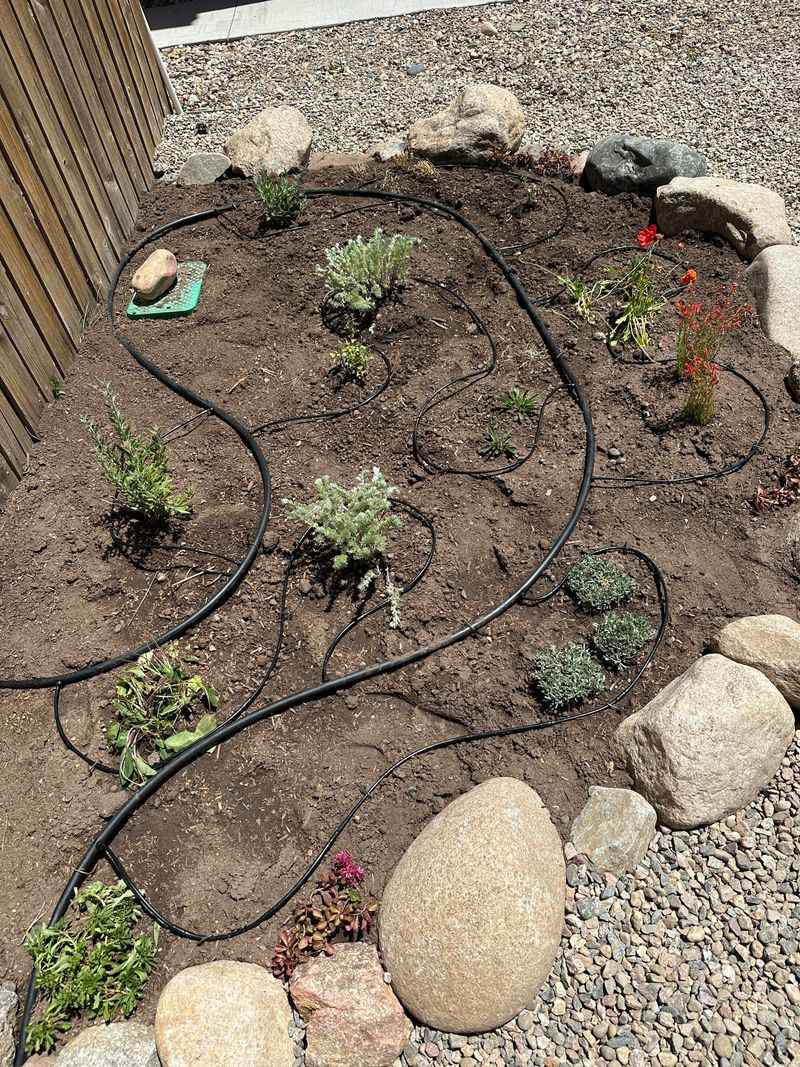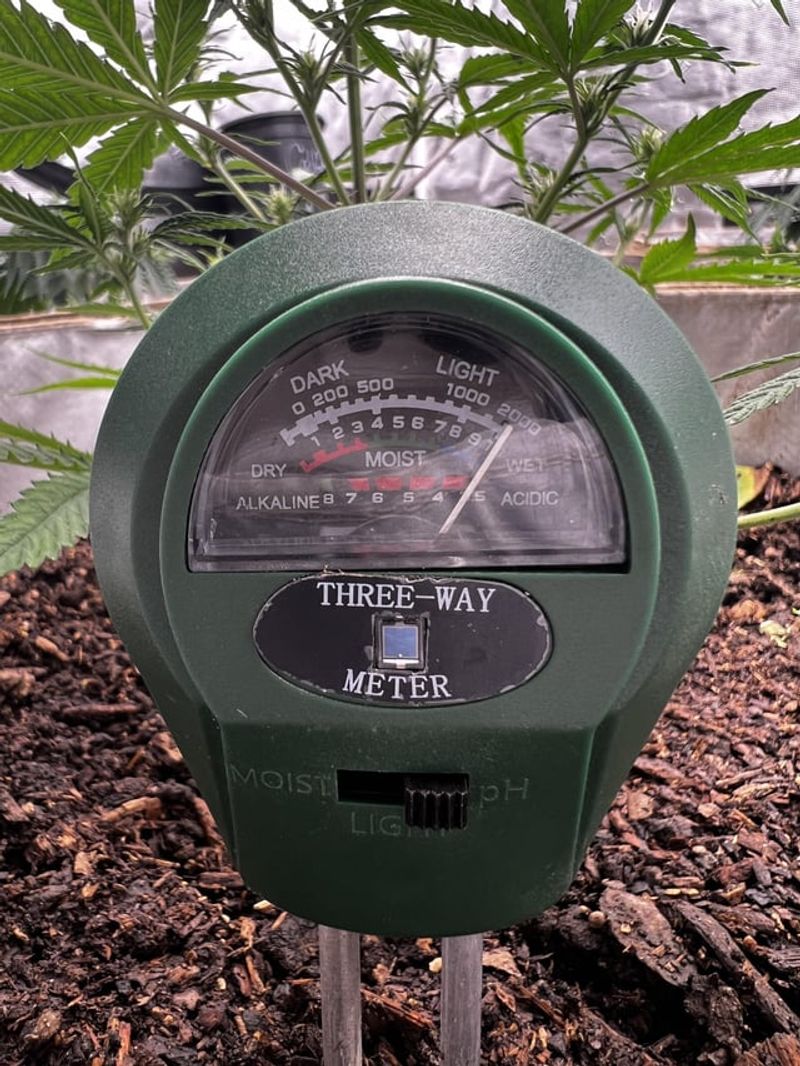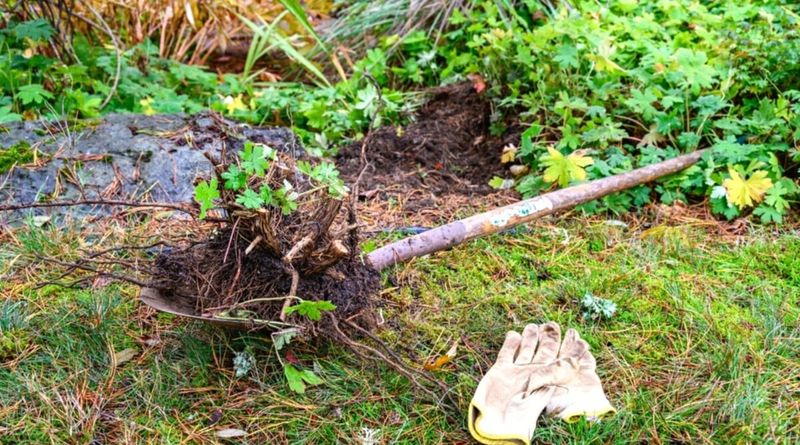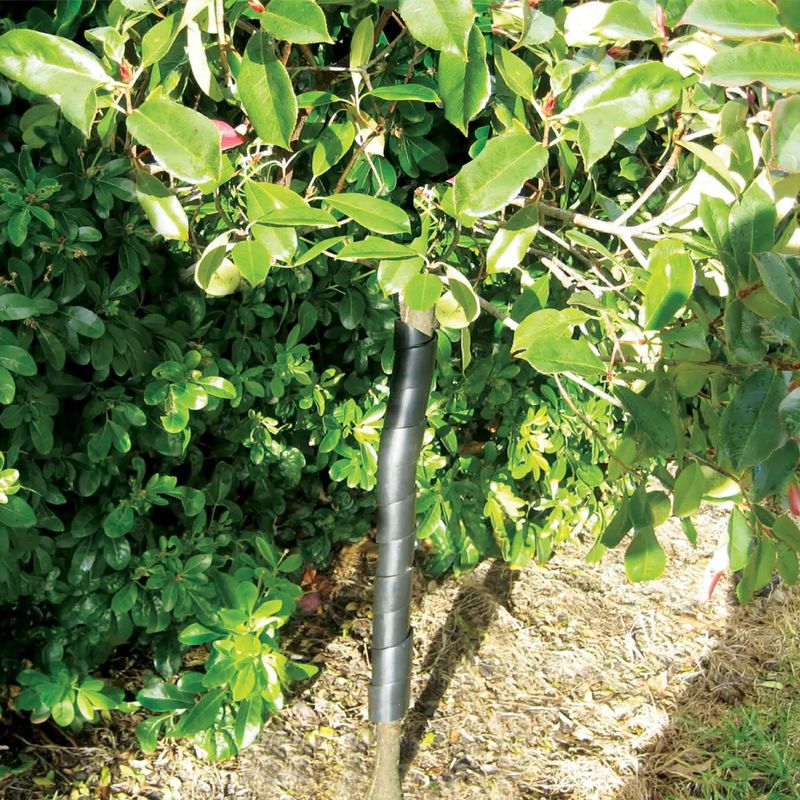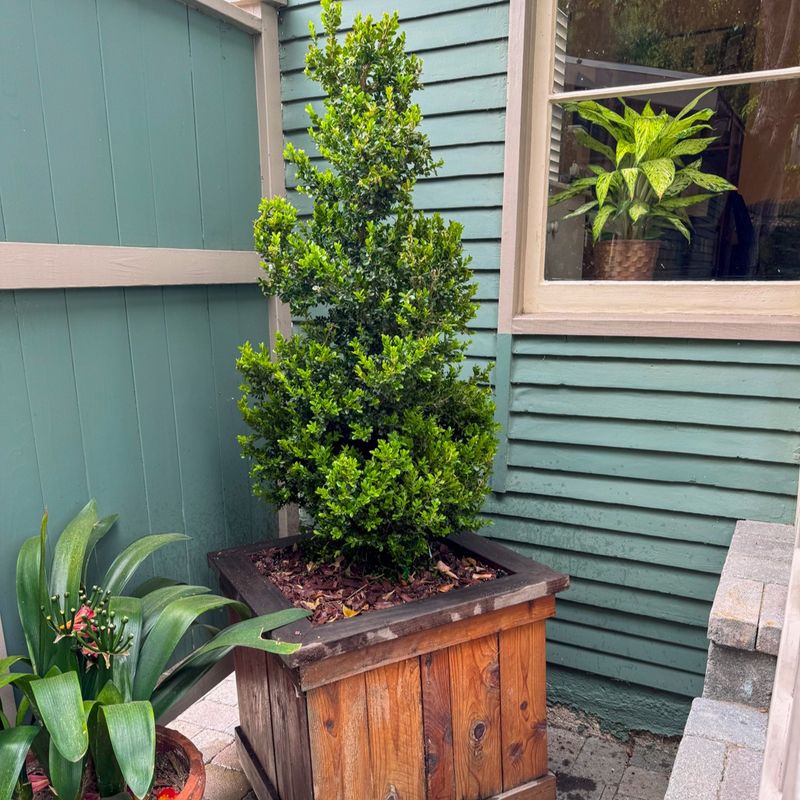Shrubs may be low-maintenance, but they’re not no-maintenance—especially as May winds down. These 18 quick, impactful tasks will keep your shrubs healthy, shapely, and ready to thrive through summer and beyond.
From pruning tips to watering reminders, this checklist gives your plants exactly what they need before the month slips away.
1. Clean Out Winter Debris
Winter storms leave branches, leaves, and other debris trapped in your shrubs. Clearing this material prevents pest infestations and disease spread while improving air circulation.
Use gloved hands or a small rake to gently remove accumulated matter. Pay special attention to the center of dense shrubs where debris often collects unnoticed.
This simple task takes minutes but dramatically improves shrub health by eliminating hiding spots for harmful insects and fungal spores.
2. Prune Dead or Damaged Branches
Sharp, clean pruning shears make quick work of winter casualties. Look for branches that failed to leaf out or show signs of disease and damage.
Make cuts at a 45-degree angle just above a healthy bud or branch junction. This technique encourages proper healing and new growth direction while preventing water collection on cut surfaces.
Removing dead wood not only improves appearance but redirects the plant’s energy toward healthy growth rather than trying to repair damaged sections.
3. Shape Overgrown Shrubs
Spring presents the perfect opportunity to restore shape to unruly shrubs before they put energy into new growth. Focus on maintaining each shrub’s natural form rather than creating artificial shapes.
Remove no more than one-third of the plant at once to avoid shock. Start with the longest branches, stepping back frequently to assess your progress from different angles.
For flowering shrubs, timing matters—spring bloomers should be pruned right after flowering, while summer bloomers can be shaped now without losing this year’s flowers.
4. Apply Fresh Mulch
A fresh 2-3 inch layer of mulch works wonders for shrub health. Organic options like shredded bark or compost gradually break down, improving soil structure while suppressing weeds.
Keep mulch several inches away from stems and trunks to prevent rot and rodent damage. Extend mulch to the shrub’s drip line (where rain falls from outer branches) for maximum benefit.
Beyond practical benefits, mulch creates a clean, finished appearance that makes your landscape look professionally maintained while reducing your summer watering needs.
5. Feed with Slow-Release Fertilizer
May marks prime time for feeding shrubs as they enter active growth. Slow-release granular fertilizers provide steady nutrition without the burn risk of quick-release options.
Choose formulations specifically designed for shrubs or woody ornamentals. These balanced products support overall health rather than just pushing leafy growth at the expense of roots and flowers.
Scatter fertilizer evenly around the drip line, then water thoroughly to begin the release process. One application now often provides all the nutrients needed for the entire growing season.
6. Check for Pest Infestations
Early detection makes pest control infinitely easier. Examine both leaf surfaces and stem junctions where insects often gather. Look for chewed leaves, sticky residue, or unusual speckling that signals trouble.
Many common problems like aphids and spider mites can be managed with a strong spray of water or insecticidal soap rather than harsh chemicals. Catch them now before populations explode.
Don’t forget to check soil around shrubs for signs of grubs or other underground pests that might damage roots as temperatures warm.
7. Treat for Disease Prevention
Fungal diseases thrive in spring’s damp conditions. Preventative treatments now can spare your shrubs summer suffering from powdery mildew, black spot, or rust.
Apply fungicides during dry weather when leaves can dry completely afterward. Focus on plants with history of disease or varieties known to be susceptible in your area.
Remember that good air circulation is nature’s disease fighter. Proper pruning and spacing help more than any spray, so combine both approaches for maximum protection as humidity rises with summer temperatures.
8. Deep Water Established Plants
Spring rains often provide adequate moisture, but don’t be fooled—many shrubs need supplemental watering before summer heat arrives. Deep, infrequent watering encourages roots to grow downward for better drought resistance.
Use a soaker hose or drip irrigation to deliver water directly to the root zone without wetting foliage. A good rule is applying one inch of water weekly if rainfall is insufficient.
Morning watering allows leaves to dry completely before evening, reducing disease risk while maximizing absorption before daily evaporation peaks.
9. Add Support for Flexible Stems
Young or top-heavy flowering shrubs often need help standing tall through summer storms. Installing supports now allows stems to grow naturally around them rather than forcing established branches later.
Green-coated metal supports blend into foliage while providing crucial structure. For larger specimens, consider decorative obelisks or grow-through grids that become nearly invisible as plants fill in.
Proper support prevents stem breakage and keeps blooms visible rather than flopping onto the ground after rain. Your future self will thank you when summer downpours leave neighbors’ gardens flattened while yours stands proud.
10. Divide Overgrown Shrubs
May offers a perfect window for dividing certain shrubs like spirea, potentilla, and other multi-stemmed varieties that have outgrown their space. The process rejuvenates older plants while creating free new ones.
Use a sharp spade to slice through the root ball, ensuring each division has adequate roots and several healthy stems. Replant immediately and water thoroughly to minimize shock.
Share extra divisions with neighbors or move them to fill bare spots in your landscape. Most divided shrubs bounce back quickly when the work happens before summer heat stress.
11. Edge Around Shrub Beds
Creating clean edges around shrub beds transforms your landscape’s appearance while establishing clear boundaries between lawn and planting areas. Sharp definition prevents grass from invading shrub territory.
Use a half-moon edger or power edger to cut 4-5 inches deep along bed perimeters. Remove the strip of sod, then fill the trench with mulch to maintain the separation throughout growing season.
Beyond aesthetics, proper edging reduces trimming time all summer and prevents lawn mowers from damaging shrub trunks and surface roots.
12. Plant New Additions
Garden centers overflow with shrub options in May, and planting now gives roots time to establish before summer heat. Choose varieties suited to your specific light conditions and available space when mature.
Dig holes twice as wide as the root ball but only as deep. This encourages roots to spread outward into surrounding soil rather than circling. Break up the root ball gently if plants are pot-bound.
Water new plantings deeply every few days for the first month, even if it rains. This crucial establishment period determines long-term success more than any other factor.
13. Install Drip Irrigation
May presents the perfect opportunity to set up water-saving drip systems before summer drought stress. Unlike sprinklers, drip irrigation delivers water directly to roots with minimal waste and evaporation.
Basic kits from garden centers include everything needed to convert a standard spigot to efficient drip lines. Run tubing along shrub beds, then add emitters near each plant’s root zone.
Once installed, these systems save countless hours of hand watering while improving plant health through consistent moisture. Add a simple timer for completely automated care during summer vacations.
14. Test and Adjust Soil pH
Many shrub problems trace back to improper soil pH. Rhododendrons, azaleas, and blueberries need acidic conditions, while lilacs and boxwood prefer slightly alkaline soil. May gives you time to make adjustments before peak growing season.
Inexpensive soil test kits from garden centers provide quick results. For acidic-loving plants in alkaline soil, add sulfur or peat moss. If soil proves too acidic for your shrubs, lime applications gradually raise pH.
Small pH adjustments now prevent nutrient deficiencies that cause yellowing leaves and poor performance throughout summer.
15. Remove Invasive Competition
Aggressive vines and ground covers compete with shrubs for water and nutrients. English ivy, pachysandra, or vinca might look pretty but often choke out shrubs when left unchecked.
Create a competition-free zone extending at least one foot from shrub bases. Hand-pull invaders or use cardboard topped with mulch to smother persistent spreaders without chemicals.
Regular monitoring prevents recolonization. This simple step dramatically improves shrub performance by eliminating the underground battle for resources that often goes unnoticed until plants show stress.
16. Apply Protective Trunk Guards
String trimmers and lawn mowers cause more shrub deaths than disease! Protective guards around trunks prevent accidental damage during routine landscape maintenance.
Simple plastic spiral guards or sections of corrugated drain pipe split lengthwise work perfectly. Extend protection several inches above and below the soil line where damage typically occurs.
For decorative options, create mulch circles wide enough to eliminate the need for trimming near trunks. Either approach saves plants from the devastating bark damage that interrupts nutrient flow and invites disease.
17. Refresh Container Shrubs
Potted shrubs need special spring attention after winter confinement. Gently remove the top inch of old soil without disturbing roots, then replace with fresh potting mix rich in organic matter.
Check for root-bound conditions by looking for circling roots at the container edge. If severely pot-bound, consider moving to a container one size larger or root-pruning to rejuvenate the plant.
Position container shrubs where they’ll receive appropriate light for their variety. Unlike in-ground plants, potted specimens rely entirely on you for their water and nutrient needs throughout the growing season.
18. Document with Photos
Creating a visual record of your shrubs in May provides valuable reference points for future care decisions. Snap clear photos from multiple angles showing the overall shape, problem areas, and flowering performance.
Use your phone to note bloom times, pruning dates, and fertilizer applications alongside images. This simple documentation helps track improvements and identify issues before they become serious.
When questioning whether a shrub has grown since last year or if that spot appeared before, your photo library provides concrete answers rather than relying on memory.

